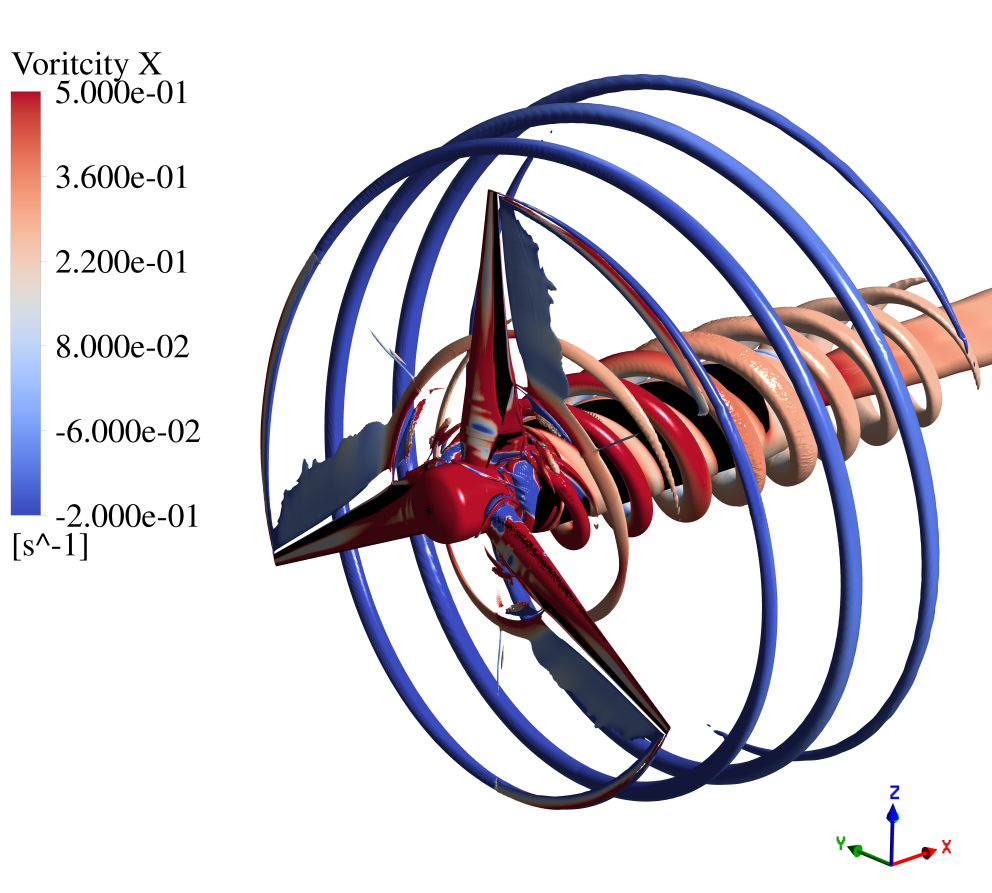The Influence a Turbine has on Ideal Tidal Flows

This image describes the evolution of a 1.5 MW tidal turbine wake using the results of a steady state Computation Fluid Dynamics (CFD) simulation. The visualization is achieved using a q-criterion isosurface; a common technique for depicting vortical flow phenomena. The dominant helical shaped structures shown are known as root and tip vortices. These are generated by the pressure difference between the blade surfaces arriving at abrupt changes in geometry, causing swirl. The signs of these vortices are opposite, which is shown by coloring the isosurface with streamwise vorticity. The objective of my master’s thesis is to conduct a parametric study that explores how hub and root geometries influence power output and thrust loads. Hydrodynamic forces on a tidal turbine have a strong dependence on the wake, making an investigation into how the root vortex changes an important indicator in obtaining an optimal geometric configuration.